Best Samsung phones 2021: Which Galaxy model should you buy?
The top pick among the best Samsung phones right now is also one of the more expensive options — the Samsung Galaxy S21 Ultra. In fact, the S21 Ultra happens to be one of the best phones, period, whether it’s made by Samsung or someone else. But don’t think you’ll be forced to pay top dollar if you want a great Samsung device.
Samsung now offers a wide array of phones, including midrange models led by the Galaxy A52 5G. That device has joined this list of the best Samsung phones, as Samsung builds out a budget lineup that’s as impressive in its own right as the company’s flashier flagship and foldable devices.
Finding the best Samsung phones is all about figuring out what kind of phone you’re looking for and how much you’re willing to pay. Chances are, Samsung has a phone with the features you want at the price you’re looking for. These are our picks.
What are the best Samsung phones?
As noted above, the Galaxy S21 Ultra is Samsung’s ultimate smartphone. The Galaxy S21 and Galaxy S21 Plus are both impressive phones in their own right, with dynamic displays, fast processors and lower price tags compared to last year’s S20 models. They’re just as deserving a place in the debate over the best Samsung phone.
There are cheaper options, still, especially now with the Galaxy A52 5G available. Last year’s Galaxy S20 FE also remains a popular option for getting flagship features at a lower price, though a new version looks likely to arrive in the second half of 2021.
As for Samsung’s foldable phones, the Galaxy Z Fold 2 has emerged as the best foldable phone you can buy, though it’s pretty expensive, even after a $200 price cut. More significantly a successor is on the way, so unless you need a new phone now, wait a few months to see what Samsung has in store for its foldable lineup.
The best Samsung phones you can buy right now

The Samsung Galaxy S21 Ultra takes its spot at the top of our best Samsung phones list for a number of reasons. Start with the Snapdragon 888 system-on-chip, which powers the U.S. version of the phone, which gives the best performance results we’ve seen from an Android device. We also appreciate that the S21 Ultra is the first phone outside of Samsung’s Galaxy Note lineup to support the S Pen, giving your productivity an added boost.
But a couple of features really stand out from those selling points. The Galaxy S21 Ultra features a dynamic display with a refresh rate that can scale between 10Hz and 120Hz, depending on what you’re doing. (Tasks like scrolling get the faster refresh rate, while more static activities get a battery-saving speed.) You’ll find two telephoto lenses on the back of the S21 Ultra — one with a 3x zoom, the other capable of a 10x zoom — cementing Samsung’s place as the phone maker that handles zooms lenses the best.
The Galaxy S21 Ultra remains a pricey phone, but it’s debuting at $200 less than the Galaxy S20 Ultra cost a year ago. If you want the best features Samsung offers, snap up this device right away.
Read our full Samsung Galaxy S21 Ultra review.
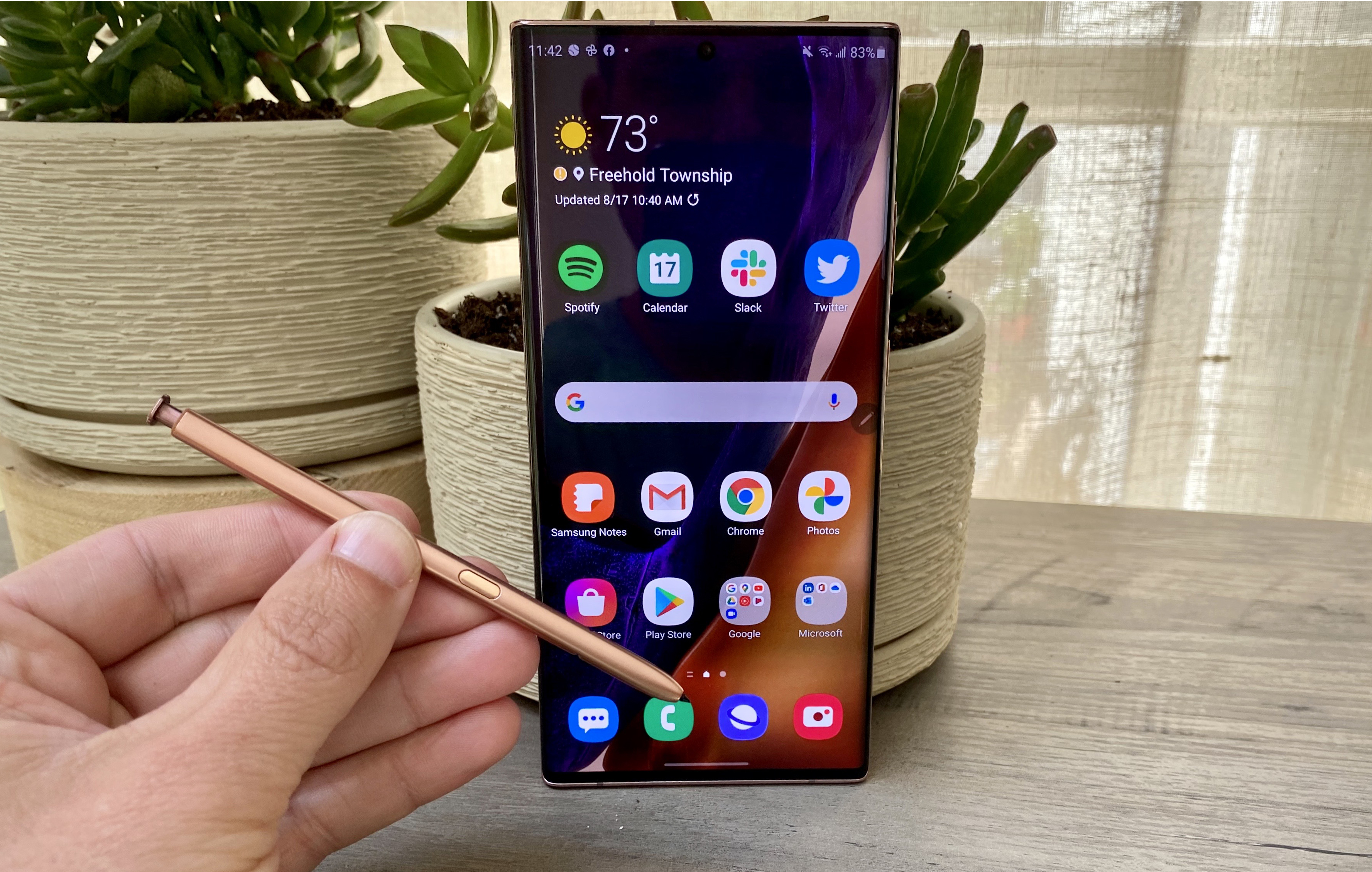
The Galaxy Note 20 Ultra was once Samsung’s ultimate smartphone and the best Samsung phone you can buy, even if the Galaxy S21 Ultra has since supplanted it. While the Galaxy Note 20 commands a high price — at $1,299, it’s $100 more than the S21 Ultra — but its many advances are well worth the premium Samsung charges.
One of the most eye-catching features on the Galaxy Note 20 Ultra is the phone’s dynamic refresh rate that automatically adjusts based on what you’re using the phone for. There are other productivity-minded features, too: The S Pen is more responsive than ever, with latency reduced to 9ms. Samsung’s DeX feature works wirelessly with the Galaxy Note 20 Ultra. The phone is also powered by the Snapdragon 865 Plus, which is still an excellent chipset even after the Snapdragon 888’s arrival.
The Note 20 Ultra’s hefty camera bump takes some getting used to, and people who balk at paying four figures for a smartphone will want to look elsewhere. But the Galaxy Note 20 Ultra delivers one of the most versatile big phone experiences of any Samsung handset. And it’s very possible that a new Galaxy Note won’t ship this year, making the Note 20 Ultra the best phablet you can get for the foreseeable future.
Read our full Samsung Galaxy Note 20 Ultra review.
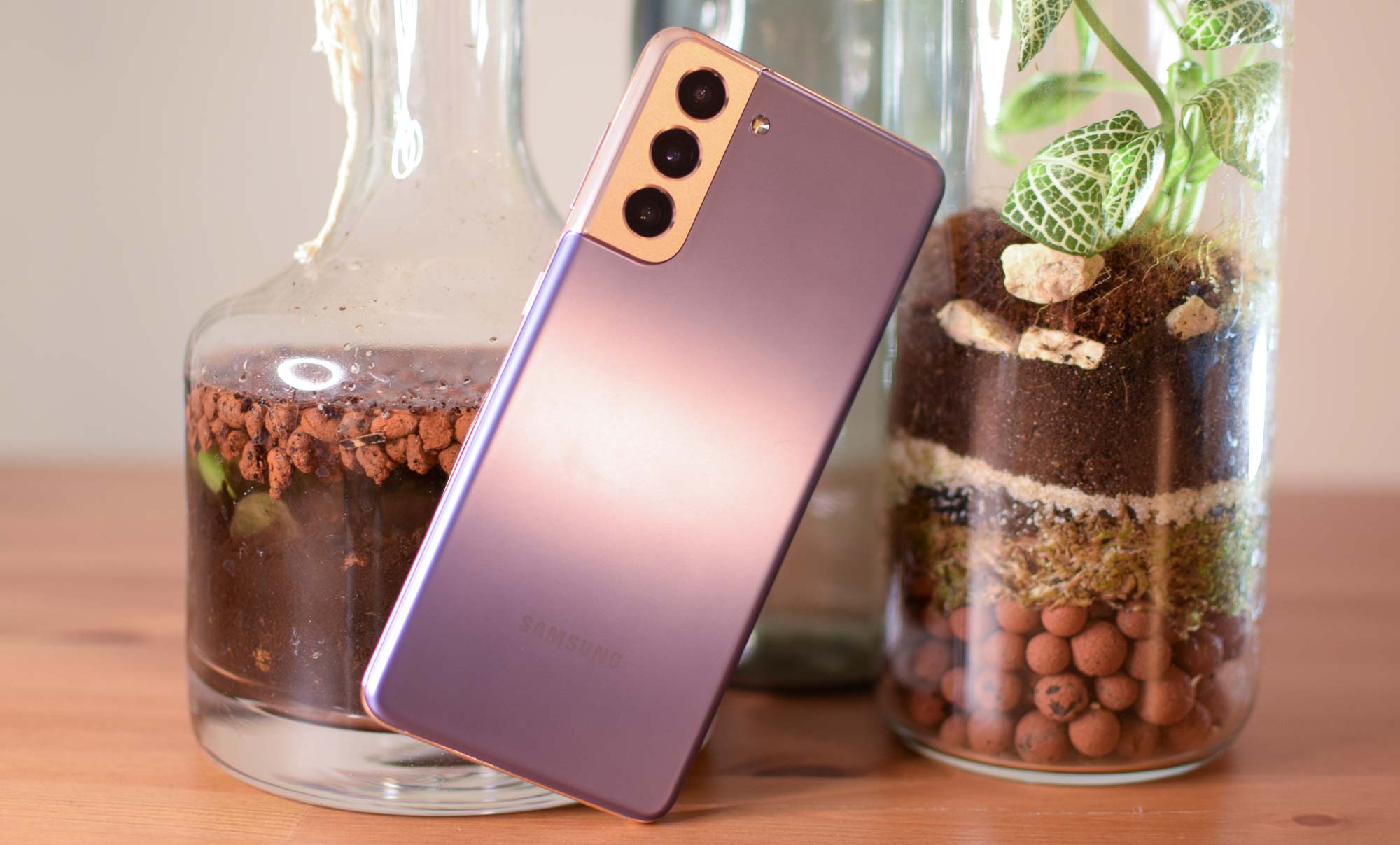
The price is right for the Galaxy S21, the least expensive of the new Samsung flagships. At $799, the Galaxy S21’s starting price is $200 less than what Samsung charged for last year’s Galaxy S20. That price also compares well to Apple’s iPhone 12.
In some ways, the feature set reflects that lower price, as Samsung uses plastic for the case on the S21 and leaves out a microSD card. You’ll also have to deal with a 6.2-inch screen with scaled-back resolution. But that display also has a dynamic refresh rate, altering the speed at which the screen refreshes based on the task on hand. And the Galaxy S21 has the same Snapdragon 888 chipset that powers the S21 Ultra to the best performance for an Android phone.
Throw in excellent cameras that fare well against comparable models from Apple and Google, and you’ve got a great phone for a less astronomical price.
Read our full Samsung Galaxy S21 review.
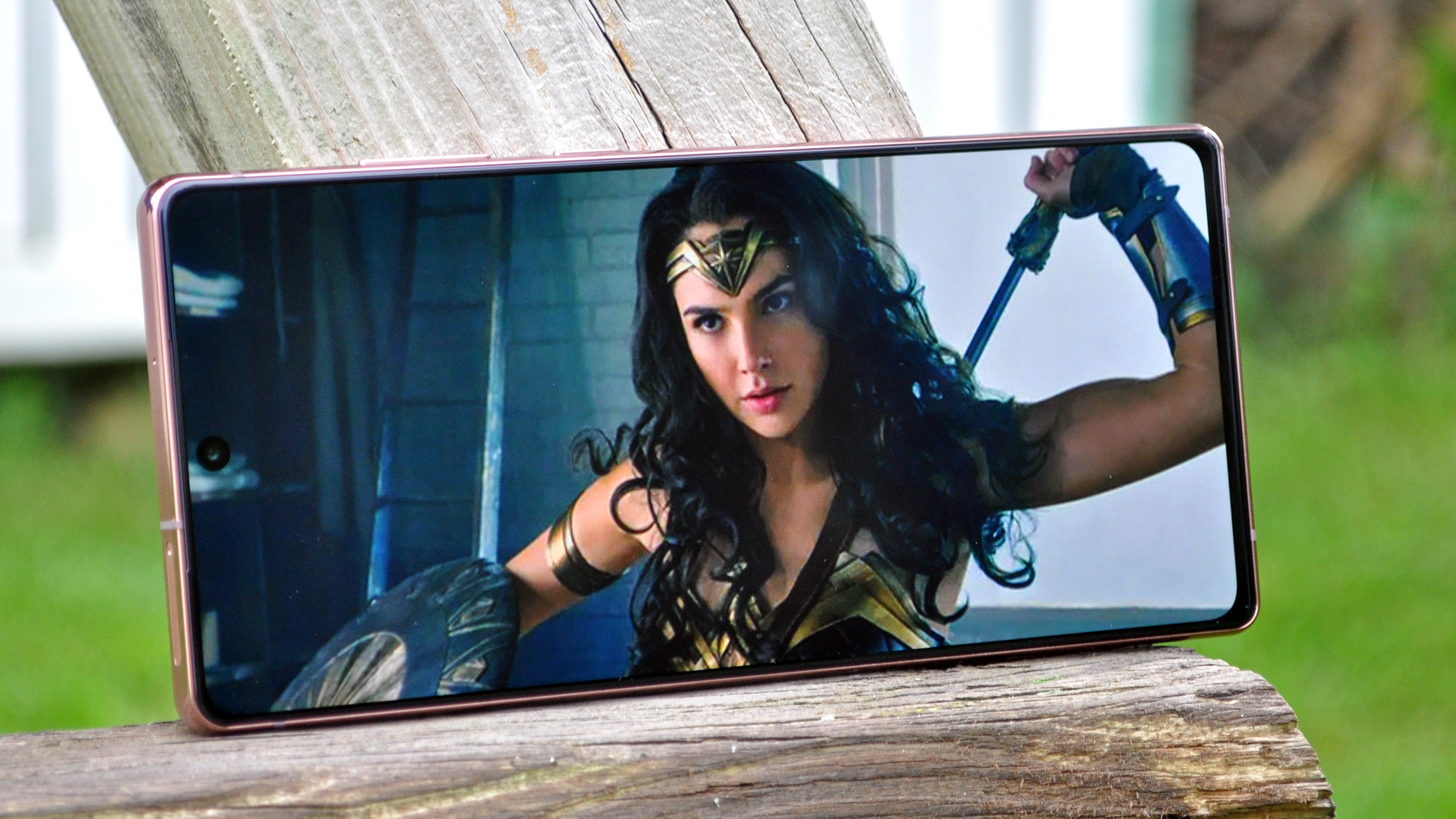
As good as the Galaxy Note 20 Ultra and Galaxy S21 Ultra are, both phones cost well over $1,000. The Galaxy Note 20 comes in at $999, and you don’t have too make too many compromises to save hundreds of dollars for a still powerful phablet.
The Galaxy Note 20’s 6.7-inch display skips the faster refresh rates found on those more expensive phones and instead of a glass back, you get a plastic one. Neither sacrifice is too great, though, especially when it means getting a phone with cameras that perform as well as the Note 20’s triple lenses do. You also get the S Pen — the secret weapon of the Galaxy Note lineup — and all of the note-taking improvements that have come with the Note 20 Ultra.
Throw in excellent performance from a Snapdragon 865 Plus chipset — the same one in the more expensive Note 20 Ultra — and you’ll be impressed by all the value Samsung has packed into the $999 Galaxy Note 20. However, it barely beats out the Galaxy S21 Plus for a place on this list solely because of the S Pen. If you want a $999 phone that has the latest specs and a glass back, then be sure to check out the S21 Plus.
Read our full Samsung Galaxy Note 20 review.
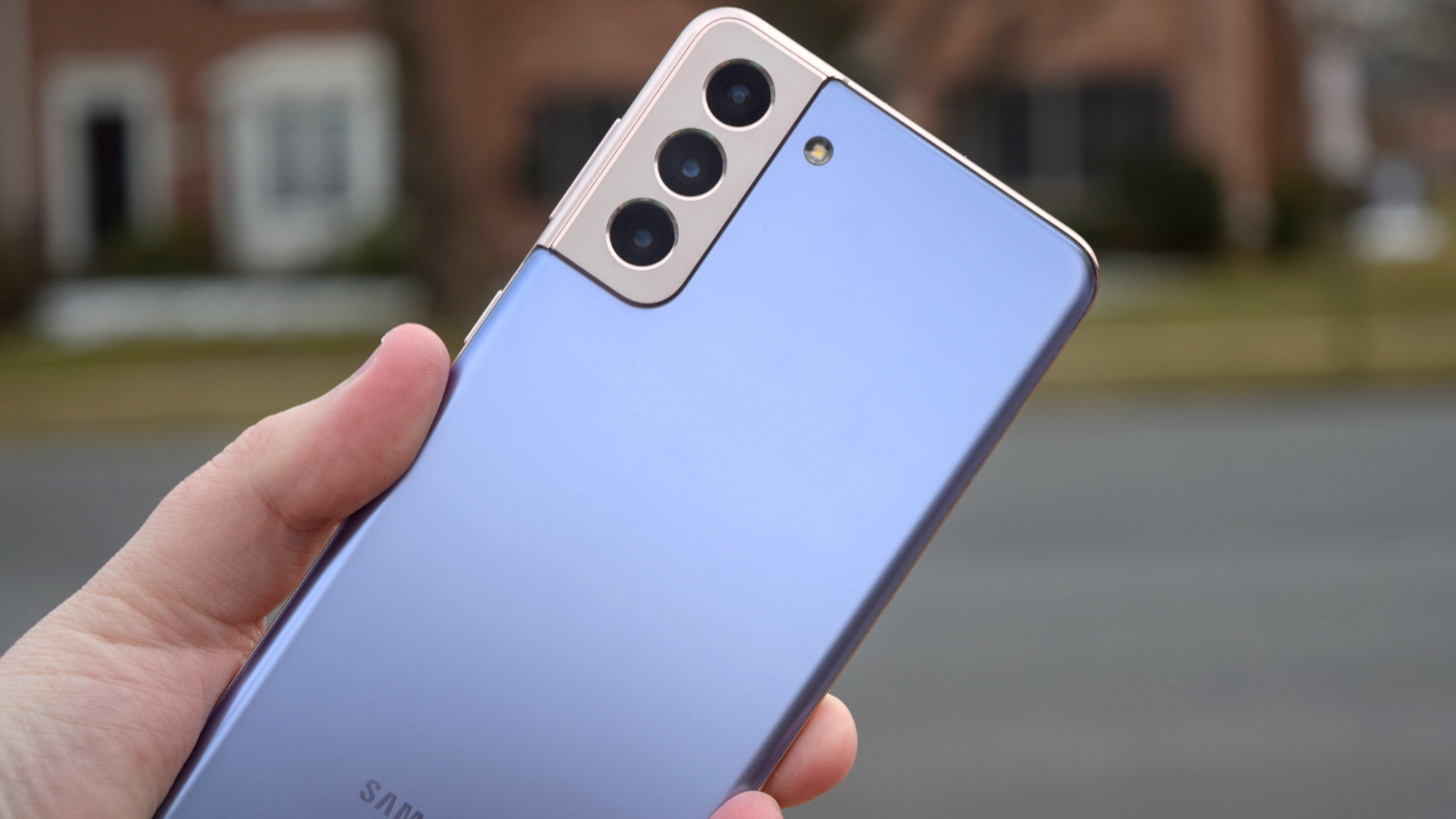
There’s not much separating the Galaxy S21 Plus from the Galaxy S21, though the former phone offers a larger screen, bigger battery and a more polished design than the less expensive S21. Whether that’s worth the extra $200 depends on how you feel about extra screen space, as the S21 Plus lasted about as long as the S21 on our battery test even with the larger power pack.
You will get an excellent phablet if you opt for the Galaxy S21 Plus, particularly when it comes to the 6.7-inch OLED panel. That’s because like other members of the S21 family, the Plus’ screen has a dynamic refresh rate that adjusts based on what you’re using the phone to do. (It matches the S21’s 48-120 Hz range.) Cameras are also excellent, particularly the Galaxy S21 Plus’ telephoto lens, which features a 3x optical zoom and a 30x zoom digital zoom.
Fans of big phones won’t mind how bulky the Galaxy S21 Plus can be. They’ll just be happy to have a solidly designed phone that gives them the display real estate they demand.
Read our full Samsung Galaxy S21 Plus review.
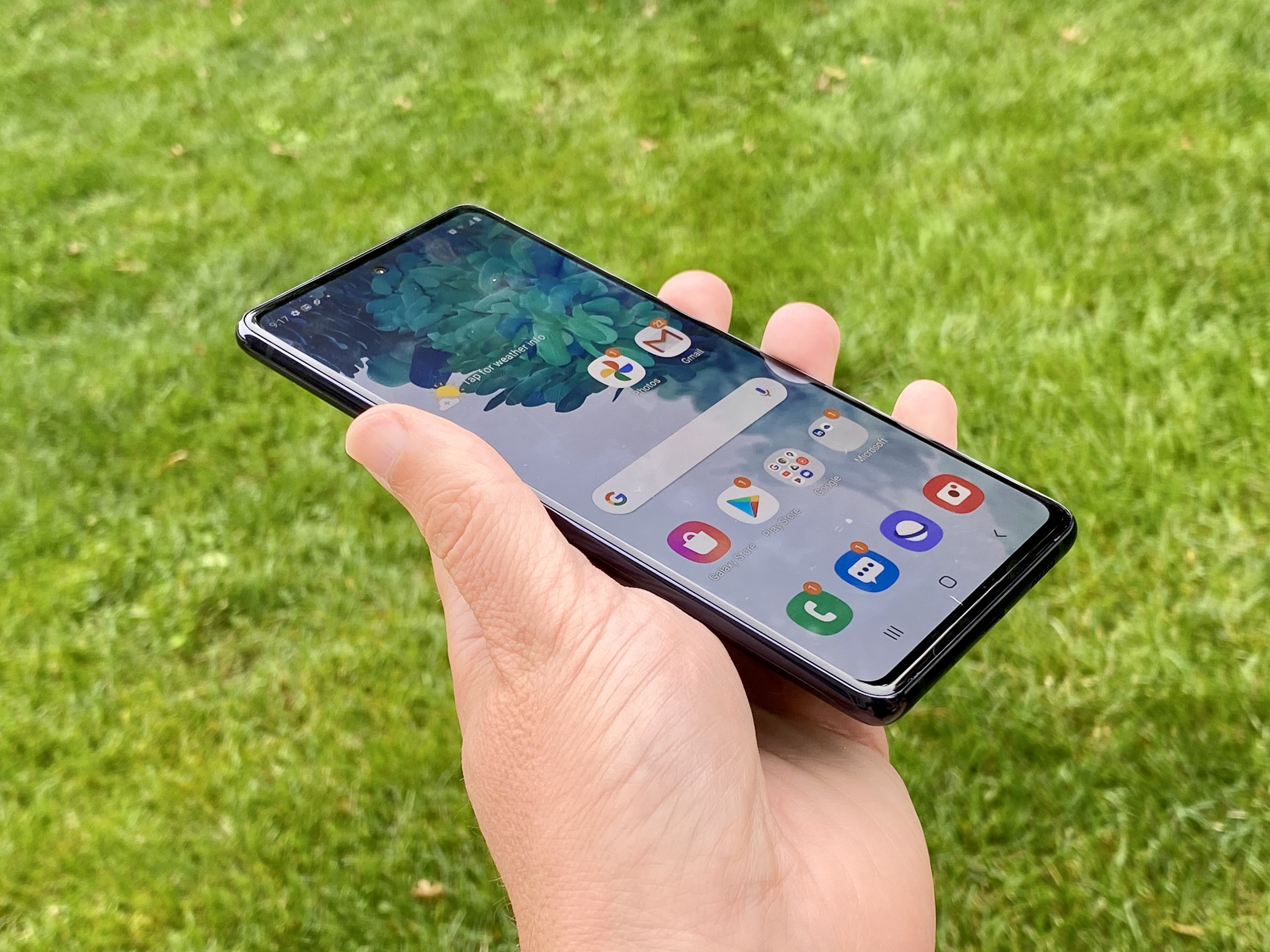
Maybe you were impressed by the different Galaxy S20 models that debuted in 2020, but you were put off by the fact that they cost $999 or more. The Samsung Galaxy S20 FE can alleviate that sticker shock by packing in many of the best features in the S20 but for $300 less.
This $699 phone runs on a powerful Snapdragon 865 system-on-chip with 5G connectivity. Its 6.5-inch OLED display features the super-fast 120Hz refresh rate that makes for smoother scrolling. And while its 8MP telephoto lens isn’t as sharp as the 64MP lens on the S20, we’re still impressed by the Space Zoom feature.
You’ll make some tradeoffs with the Galaxy S20 FE — the phone features a plastic case and its included charger isn’t as fast — but this is a great phone for people who want premium features at a reasonable price. At $100 less than the Galaxy S21, it’s still a good value unless you have to have the Snapdragon 888. Just be aware that rumors of a Galaxy S21 FE are starting to pick up, which could mean a lower-cost flagship with fresher specs is imminent.
Read our full Samsung Galaxy S20 FE review.
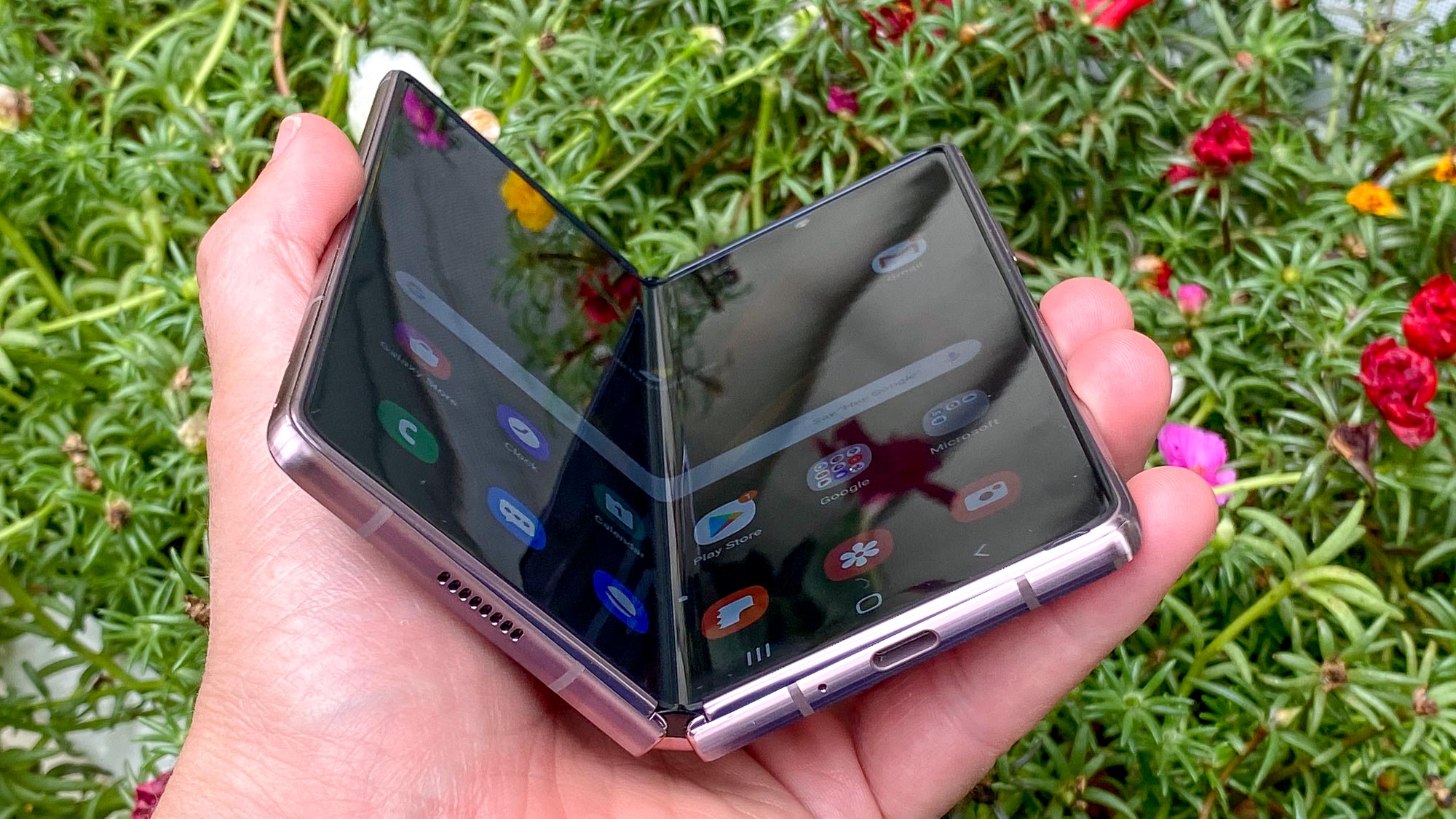
Samsung clearly learned from the missteps with the original Galaxy Fold, building a much more thoughtfully designed foldable with the Galaxy Z Fold 2. And while we appreciate the larger displays — both the cover screen and the interior panel are larger than before — as well as the reinforced hinge, what really makes the new Fold standout is its role as a productivity booster.
The reinforced hinge brings the same Flex Mode that Samsung introduced with the Galaxy Z Flip to the Fold lineup, allowing you to split your screen into different functions. Multitasking with three apps returns, and you can now pair apps together to launch at the same time. Other apps have been redesigned to take advantage of the Galaxy Z Fold 2’s full screen, essentially turning your phone into a tablet.
The Galaxy Z Fold 2 is much better buy now that Samsung has permanently cut the price by $200 to $1,799. Still, that’s a lot to pay for a smartphone, even one that offers three rear cameras and a Snapdragon 865 Plus processor. Samsung is reportedly working on a successor, the Galaxy Z Fold 3 that could arrive either in July or August according to some rumors. Until that phone arrives, though, the Fold 2 is the best foldable device in Samsung’s lineup.
Read our full Samsung Galaxy Z Fold 2 review.
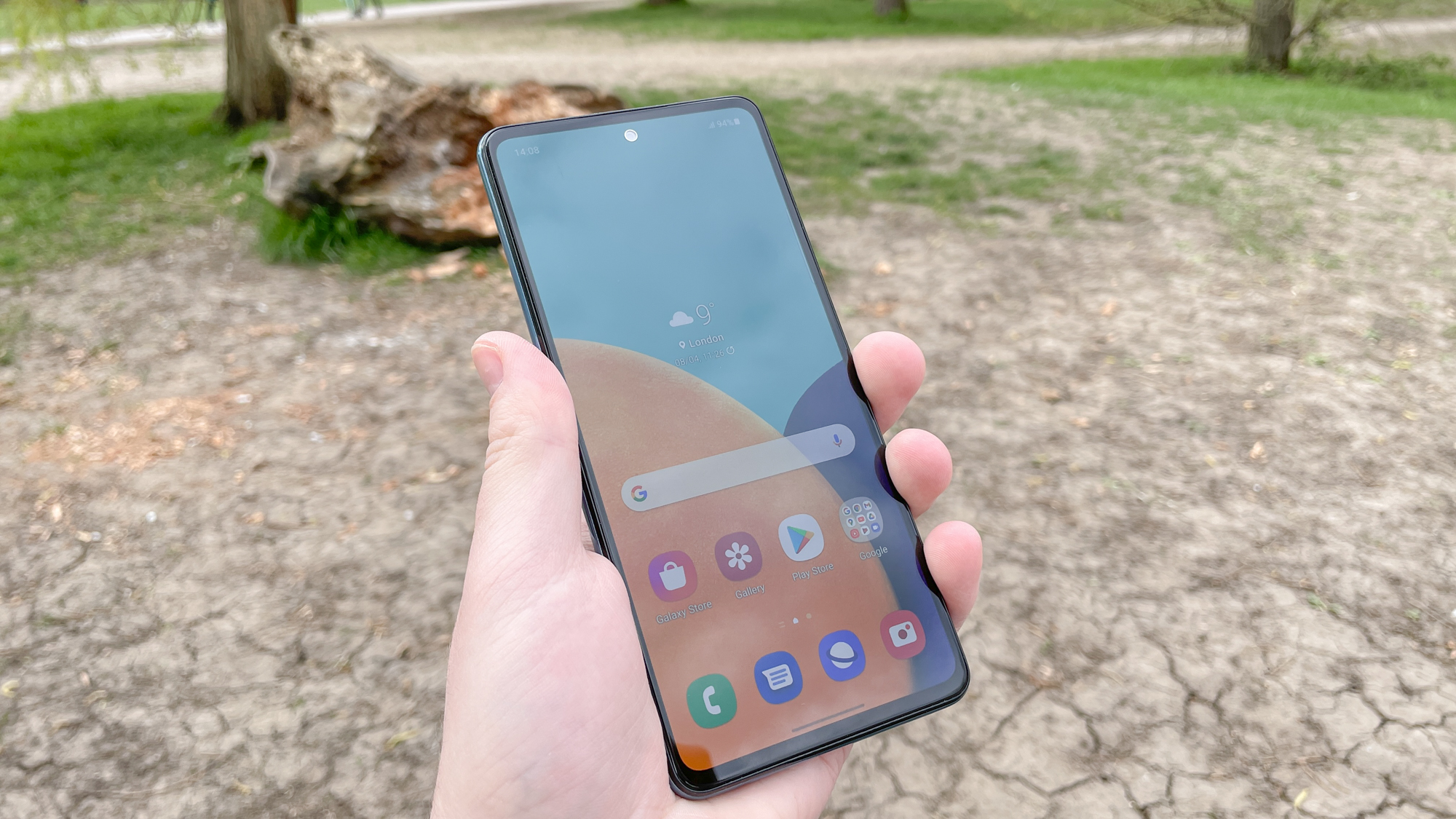
Samsung’s midrange phone lineup is currently led by the Galaxy A52 5G. (That’s the case in the U.S., at least, where the Galaxy A72 5G won’t be shipping.) Despite a lower price tag than the Galaxy S series, you’ll find a lot of the key features that highlight those phones. Samsung includes a 6.5-inch display with a 120Hz refresh rate, though there’s no dynamic adjustment for the Galaxy A52 5G’s screen.
The main 64MP lens takes some pretty compelling shots, even if the other cameras on the phone (a 12MP lens plus dedicated macro and depth sensors) can’t keep pace with the photos produced by top camera phones in this price range. You will appreciate the A52 5G’s Snapdragon 750G chipset, its hearty battery life and the fact that a phone charger ships with the phone.
If you’re looking for a Samsung phone for less than $500, the Galaxy A52 5G is a pretty solid choice, though the Galaxy A42 and A32 go even lower on price. (See how these phones stack up in our Galaxy A52 5G vs. Galaxy A42 5G vs. Galaxy A32 5G comparison.)
Read our full Samsung Galaxy A52 5G review.
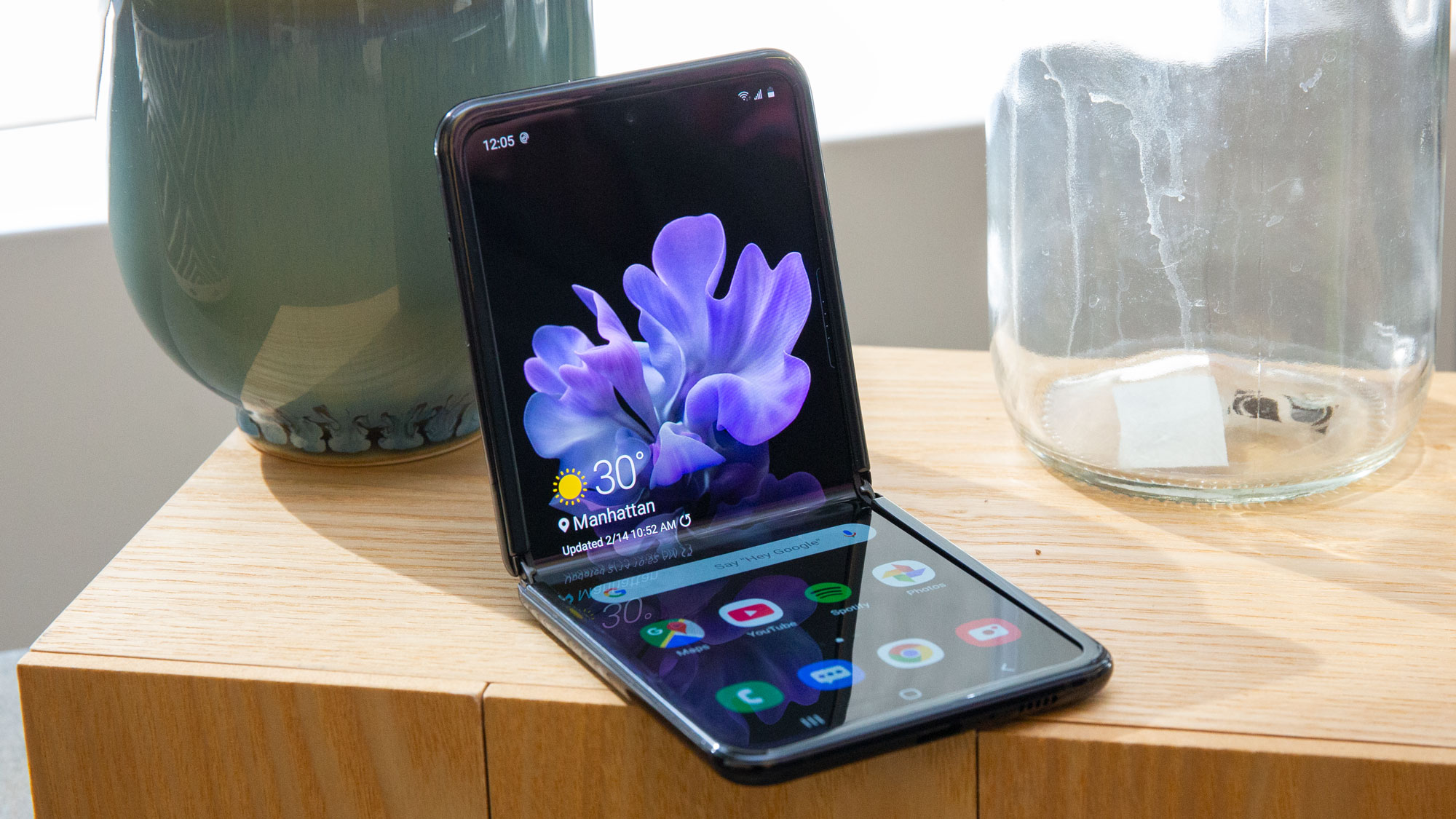
With the Samsung Galaxy Z Flip, we finally have a foldable phone that can hold its own with other devices. Just like the Motorola Razr, Samsung drew on the flip phones of yesteryear for inspiration, but unlike Motorola’s flawed device, the Galaxy Z Flip feels solid and well built. Credit the layer of Ultra Thin Glass that Samsung uses on the phone’s 6.7-inch interior display and the overall quality of the phone’s hinge.
Folding the device into something the fits neatly into a pocket isn’t just a cosmetic gimmick. Samsung has figured out a way for you to make the most of the Galaxy Z Flip’s foldability, with a Flex mode that splits activities between the top and bottom half of the display. The Galaxy Z Flip also supports multitasking with many apps, allowing you to run two apps at a time.
The Snapdragon 855 Plus chipset powering the phone delivers strong performance, though more recent handsets are faster (including Samsung’s own Galaxy S21 models). The two rear cameras on the Galaxy Z Flip produce shots that are almost as good as the best camera phones, though we’d still prefer either the iPhone 12 Pro or the Pixel 5 when it comes to taking photos. For that reason, it’s hard to recommend this foldable phone over less expensive, more capable flagship devices. But the Galaxy Z Flip proves that a foldable phone can truly deliver the goods, and that’s a big step forward.
You’ve got two choices with the Galaxy Z Flip — an LTE version or a 5G version. Apart from their cellular connectivity, they’re essentially the same phone, though the Galaxy Z Flip 5G costs less than the original model. (In fact, at $1,199, it’s the same price as the Galaxy S21 Ultra.) We’d recommend the 5G version over the more expensive standard Flip, though you could also wait for the forthcoming Galaxy Z Flip 3, set to arrive at the same time as the Galaxy Z Fold 3.
Read our full Samsung Galaxy Z Flip review.
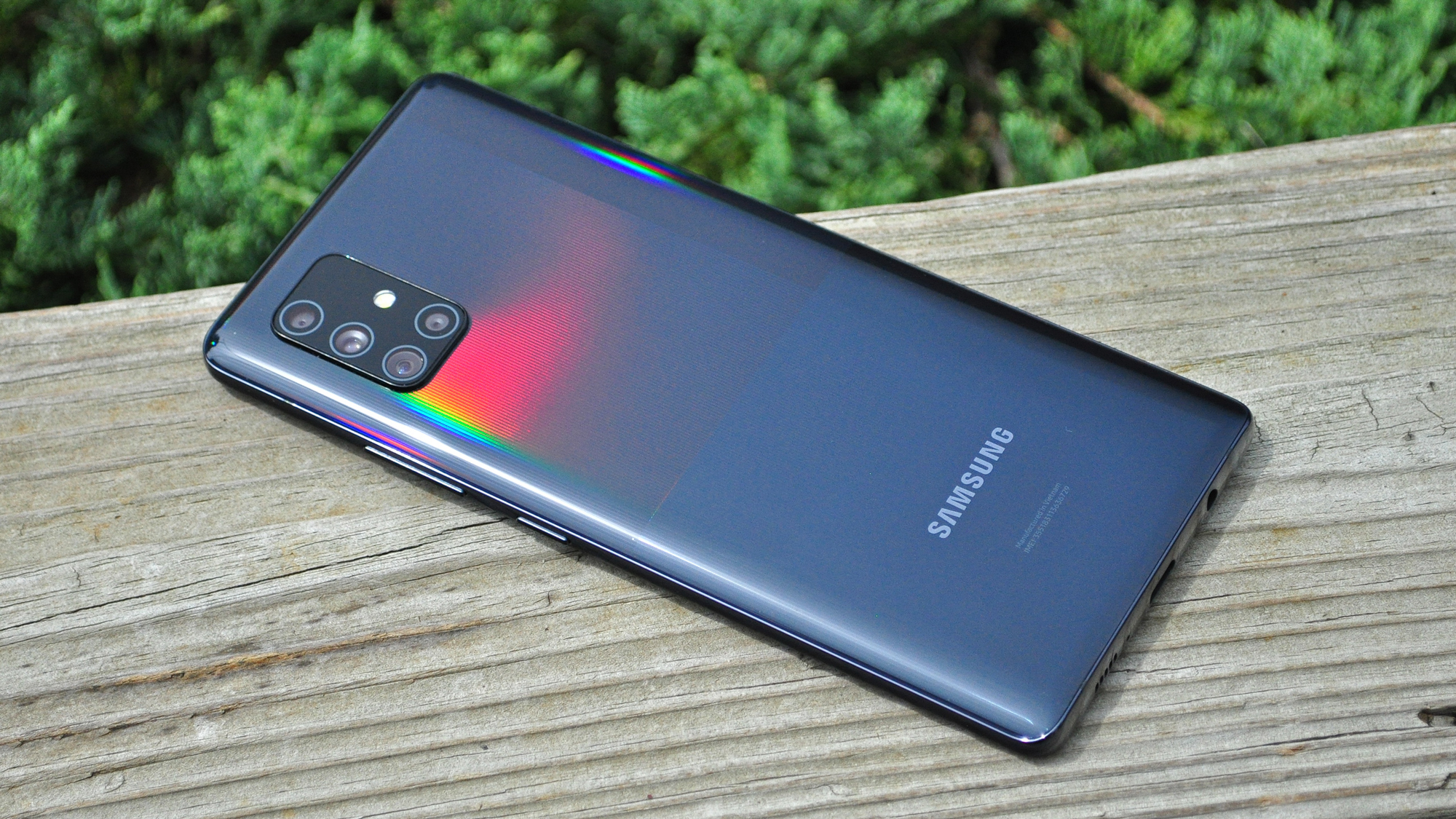
The Samsung Galaxy A71 5G is a holdover on our list of best Samsung phones, especially with the launch of the Galaxy A72, which promises newer hardware, even if it lacks 5G connectivity. But the A72 won’t be headed to the U.S. — it’s too similar to the Galaxy S20 FE, Samsung’s decided. (And there may be a Galaxy A82 in the works as well.) That means the A71 5G is still an option in this country, especially since its price has fallen from the original $599 cost.
That was already a low price to pay to get a 5G phone. And even though it’s a year older, the Galaxy A71 5G still offers good battery life, decent performance and — most importantly — connectivity with all kinds of 5G networks. (The version built specifically to work with Verizon’s high-speed mmWave-based 5G coverage costs $50 extra.) You’ll also appreciate the big, 6.7-inch OLED screen, which reinforces the idea that you have big screen options beyond the pricey Galaxy Note series.
Read our full Samsung Galaxy A71 5G review.
How to choose the best Samsung phones
Picking which Samsung phone to buy is primarily driven by budget considerations. You’re not going to spring for a Galaxy S21 Ultra, for example, if you’re not prepared with at least $1,199 even if you opt to spread those payments out over time. But other factors need to be taken into consideration as well.
Start with how you use your smartphone. If it’s primarily a productivity device, you’d want to focus on the Galaxy Note lineup, specifically because of the powerful S Pen that comes with Samsung’s large-screen phone. If you turn to your phone for photography, the Galaxy S series is usually first in line for Samsung’s camera innovations.
Budget-minded shoppers will want to consider the now-released $499 Galaxy A52 5G. Samsung has even cheaper 5G models, though, including the Galaxy S32 5G, which T-Mobile is offering for free to anyone who trades in a phone and commits to two years of service.
Be aware that there are always new Samsung phones lurking around the corner. We’re expecting a successor to the Galaxy Z Flip at some point this year. As for Samsung’s other foldable phone, the Galaxy Z Fold 3 is also rumored to be in the works, potentially replacing the Galaxy Note lineup later this year. The status of the Galaxy Note 21 remains up in the air.
How we test Samsung phones
To find the best Samsung phones, we test the company’s handsets the same way we test every smartphone we review. We run benchmarks on each phone, including synthetic benchmarks like Geekbench 5 and 3DMark to measure graphics performance. That allows us to compare Samsung device to other phones, including Apple’s iPhone. In addition, we use real-world testing that includes a video transcoding test using Adobe Premiere Rush.
In our lab, we measure the brightness of the phone’s display (in nits), as well as how colorful each screen is (using the sRGB and DCI-P3 color gamut). In these cases, higher numbers are better. We also measure color accuracy of each panel with a Delta-E rating, where lower numbers are better and score of 0 is perfect.
To determine how long a Samsung phone’s battery lasts, we have the phones continuously surf the web over LTE with their screens set to 150 nits of brightness. The average smartphone lasts for 10 hours, with the best phone battery life reaching 11 hours or more in our testing.
Our camera testing involves taking photos with each Samsung phone we review and comparing them to similar shots from comparable models.We take shots of landscapes, food, portraits and more, and also allow you to be the judge with side-by-side comparisons in our reviews.
For all the latest Technology News Click Here
For the latest news and updates, follow us on Google News.
